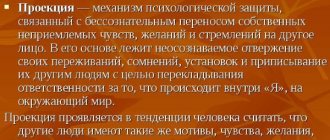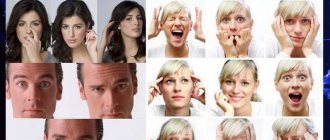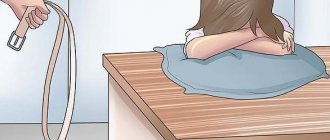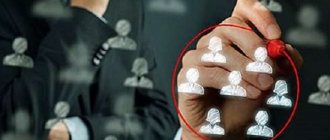Every person strives to realize himself both in his personal life and in the professional sphere. This is inherent in him initially, and as he grows up, he seeks ways of self-realization. From the point of view of psychology, self-realization is a person’s ability to realize the potential inherent in him by nature through certain actions.
To understand right now how much you have realized yourself in life at this stage, it is enough to answer a few simple questions of a psychological test.
Types of self-realization
Before you start taking the test, you need to understand what main types of self-realization exist:
• Personal – aimed at striving for material wealth and respect from others.
• Creative – requires creating something new (paintings, poems, scientific achievements).
• Professional – represents the desire to move up the career ladder and earn recognition from colleagues.
• Social – can include all the previous types, since it assumes that a person builds his life in accordance with his knowledge of happiness and well-being.
A personality self-realization test can show how ready you are to develop, and therefore to achieve success in the future.
Work on the emotional side of maturity.
We are offended by other people as if we had never offended anyone ourselves. We're sulking. We get irritated quickly. We treat people based on how they make us feel, not on who they are. We are in no hurry to forgive mistakes and shortcomings in other people, but we expect them to quickly forget about ours. We even like to play the role of victims. We react to life's circumstances instead of creating solutions. Ultimately, we completely lose control of our emotions and allow them to control us. Successful maturation includes the ability to manage your emotions. Think before you react, speak or tweet.
Rules for taking the test
You are asked to answer a series of questions with three answer options. It is not recommended to think logically about every question. The correct option is the one that responded first. In this test, it is better to trust your instinct and choose the answers that immediately come to mind. check how developed your intuition is with this simple test.
For each answer a certain number of points is awarded. The final count will show how intensively you are working on self-realization and what successes you have already achieved.
Read each question carefully, try not to get distracted and carefully analyze the result. This information will be extremely useful in further work on yourself.
Purpose of the package
Package "Personality"
designed to solve problems:
- optimization of training;
- optimization of education;
- career guidance;
- professional selection;
- personnel selection;
- personnel assessment and reserve formation.
Package "Personality"
accessible to a wide range of computer users, including those who have low “computer” qualifications, extremely useful for psychological support of the professional activities of psychologists in secondary educational institutions and universities, and specialists in recruitment agencies; departments of career guidance and vocational training of employment centers; personnel services of companies, organizations and enterprises.
Psychological test questions
1. Are you trying to learn something new about yourself?
2. You had the intention of reading a book, but suddenly you have to do other things...
3. How do you react to obstacles that prevent you from achieving your goal?
4. Do you try to find out what others think about you?
5. Do you have a habit of recording plans, thoughts, goals on paper?
6. Do you reflect on your own mistakes?
7. What is your attitude towards discussions?
8. What would you say about your self-esteem?
9. What are your preferences in your free time?
10. How do you feel about additional responsibility?
11. Your social circle consists of...
12. If, while communicating with an old friend, you realize that you have nothing to talk about and his company oppresses you, what will be the reaction?
13. What literature do you read most often?
14. How much time a day do you spend watching TV and communicating on social networks?
15. Is it easy for you to refuse if a friend or relative asks?
Plugin sponsor: Tests for girls
Personality type test
Carl Jung considered the main difference between psychotypes to be orientation towards the external or internal world. This is a well-known division between extroverts and introverts. In addition to the main factor, the Swiss psychiatrist took into account four more functions: two rational ones - thinking and feeling, and two irrational ones - sensation and intuition. This personality type test will determine your predominant attitude and function and tell you more about them according to Carl Jung's classification.
1. Two film premieres are planned in the city at the same time. By what principle will you choose the one you will go for?
2. Can we call you a person who lives here and now?
3. You agreed to meet with a friend, but your plans unexpectedly changed. How do you notify a friend that you will not be able to meet him on the appointed day?
4. What seems more important to you in a harmonious relationship?
5. Your whole family gathered for a festive dinner. What will you remember best?
6. Would you rather:
7. How many friends do you have or how many would you rather have?
8. What do you usually focus on when buying clothes?
9. Which partner would you prefer to be in a relationship with?
10. In what mode would you be more willing to work?
11. Your staff needs to be downsized. Who are you most likely to fire?
12. You are planning to go on vacation. How will you prepare for it?
13. Would you be very happy to go to an exhibition dedicated to creativity:
14. Remember your yesterday. What was the first thing that popped into your memory?
15. It is easier for you to perceive information if it is presented in the form:
16. You had an argument with a very emotional acquaintance, and you know for sure that you are right. How will you behave next?
17. Which courses would you like to take more?
18. You have too many tasks and almost everything needs to be solved as quickly as possible. But you realize that you no longer have time to complete them completely. Which of these options is closer to you?
19. You quarreled with a very close person. What are you more likely to think about after this?
20. You signed up for a couples dance course. What will be more important to you during classes?
21. What usually causes you more excitement or delight?
22. Do you prefer hobbies and work related to:
23. Which movie do you like to watch more?
24. You are more likely to think that your interlocutor is attractive if:
25. You are more inclined to adhere to the idea that:
26. You are stuck at work/study, and deadlines are already running out. What would you most likely do in such a situation?
27. What is more important to you when choosing a job?
28. You are on an excursion and you are interested in finding out the answer to one question related to the current exhibition. How will you search for information?
29. You had a hard day at work/school. How are you most likely to spend your free evening?
30. Is it difficult for you to empathize with people and show empathy?
31. What do you pay more attention to when choosing a cafe or restaurant?
32. If you were to write a book, what would it most likely be about?
33. Are moral values important to you?
34. You have to make a public presentation on an arbitrary topic. What kind of speech would you like to prepare?
35. What hobbies suit you best?
36. Do they often tell you phrases like “come down to earth”, “you seem not from this world” or call you strange?
37. You are at an exhibition of paintings. What interests you more?
38. Do you sometimes take actions for which you don’t really understand the reasons?
39. You have to spend several hours on the road. You don’t want to sleep, your bag is in your luggage, and your phone’s battery is running low. What will you do?
40. How much do you believe in miracles, magic, the paranormal?
Test to determine personal qualities. test
Purpose of the test: the proposed test allows you to instantly determine the form or type of personality, give a detailed description of the personal qualities and behavioral characteristics of any person in an ordinary language that is understandable to everyone, and draw up a behavior scenario for each personality form in typical situations. The test also determines professional preferences.Instructions:
Look at the five shapes (square, triangle, rectangle, circle, zigzag) depicted on a piece of paper. Choose from them the one in relation to which you can say: this is ME!
Choose from the figures the one that first attracted you, write down its name under No. 1. Now rank the remaining four shapes in order of your preference and write down their names under the corresponding numbers. So, the most difficult stage of the work is over. Whatever figure you place first is your new figure or subjective form. It makes it possible to determine your main, dominant character traits and behavioral characteristics. The remaining four figures are unique modulators that can color the leading melody of your behavior. The last figure indicates the shape of the person with whom interaction will pose the greatest difficulty for you. However, it may turn out that not a single figure suits you completely. Then you can be described as a combination of two or even three forms. The test highlights areas of professions that are preferable for geometric choices.
Psychological characteristics and professional preferences of basic geometric choices
"SQUARE" (WORKER). Those who choose a square as their preferred figure are “left-hemisphere” thinkers (analytical mindset). It is easier for “Square” to “calculate” the result by processing data in a logical form than to intuitively guess about it. Endurance, patience and methodicality make him a highly qualified specialist in the field of processing and systematizing information. “Square” loves established order once and for all: he is conservative, prefers to work with a certain, once established rule and with a specific task. He does not like surprises and changes in the usual course of events. He arranges, organizes people and things around him, has a practical mindset, efficiency and perseverance.
“Squares” can become excellent administrators or performers. However, excessive predilection for details, the need for additional, clarifying information to make a decision deprives them of efficiency, which negatively affects organizational abilities and management professions. Neatness, order, observance of rules and decorum can develop to a paralyzing extreme. In addition, rationality, emotional dryness and coldness prevent “Squares” from quickly establishing contacts with different people.
Preferred professions in the field: “MAN IS A SIGN SYSTEM”, for example, such as typing, accounting, economics, statistics. In addition, “Kvadrat” performs well in notarial activities and programming.
TRIANGLE (LEAD). A characteristic feature of the “Triangle” is the ability to concentrate on the main goal. Triangles are energetic, unstoppable people with a strong will. They, like “Squares,” are “left-hemisphere” thinkers, capable of deeply and quickly analyzing a situation. However, in contrast to “Squares”, who are detail-oriented, “Triangles” are able to focus on the main thing, on the essence of the problem. A highly developed pragmatic orientation directs their mental analysis to find the most effective solution to the problem under given conditions. The “Triangle” gives preference to activities that require intelligence, dexterity, and physical strength. Triangles can make excellent managers of the highest level. They are excellent at presenting to higher management the importance of their own work and the work of their subordinates, they sense a profitable business, and can go ahead to achieve their goal despite any obstacles. These are tireless fighters for whom the spirit of competitiveness, competitiveness and passion is a familiar element. They are workaholics and therefore are under constant stress. The main disadvantage of “triangles” is strong egocentrism and independence from moral standards.
Preferred professions in the field: “MAN - TECHNOLOGY”, for example, such as mechanic, electrician, engineer, agronomist, photographer, draftsman, cutter, bus driver, as well as professions related to decision-making and transfer of business information.
RECTANGLE (Transitional type). “Rectangle” is a personality type characterized by lability of moods, uncertainty in elections and is an intermediate, transitional option. The main character traits of this type are curiosity, inquisitiveness, and keen interest in everything that happens. They like to work with animals, they love to care for plants, and they are kind to all living things. They are open to new ideas, values, ways of thinking and living, and easily learn everything new. They try to approach any work creatively, do not recognize authorities, and try to find their own non-standard solutions. At the same time, their constant companion is chaos, confusion, disorder. They often attract attention with clumsy behavior, nervous and vegetative reactions that reflect their internal state. They are distinguished by unpunctuality, a tendency to avoid direct conflicts, causticity and irritability. “Rectangle” is an unpredictable madman who is in constant stress. The weakness of this type of personality is excessive gullibility, suggestibility, and naivety; such people easily become victims of manipulation.
For “Rectangles”, the most preferable professional environment is in the field of “MAN - NATURE”, for example, the profession of zoologist, ecologist, hydrologist, archaeologist, meteorologist, etc. At the same time, they can be effective in the implementation of such professional activities as designer, editor of scientific magazine, museum worker.
CIRCLE (COMMUNICATOR). Communicators are among all figures because they are the best listeners. They are those who confidently choose the circle as the most preferred figure, sincerely interested, above all, in good interpersonal relationships. The highest value for the Circle is people and their well-being. He is the connecting link of the team, strengthens and stabilizes the group in which he is located. “Circles” - the best ones have high sensitivity, developed empathy - the ability to empathize, sympathize, and respond emotionally to the experiences of another person. The circle subtly senses other people's joy and feels other people's pain as if it were its own.
The main character traits of “Circles” include humanity, sociality, and the ability to understand people. They are quite active both in professional and social activities, easily adapt to people, and show flexibility in communication and a willingness to compromise. At the same time, “Circle”, due to its social orientation, tries to please everyone and maintain peace and friendly relations to the detriment of business issues. “The Circle” is not distinguished by decisiveness, it is easily suggestible, it is not difficult to persuade it, to convince it of anything.
In terms of their style, “Circles” are “right-hemisphere”; their thinking is distinguished by imagery, intuition, and integrativeness. The main feature of this style is its focus on the subjective factors of the problem (evaluations, feelings) and the desire to find commonality even in opposing points of view. The most preferred professions for the "Circle" are professions in the field of "HUMAN - PERSON". This category includes: doctor, teacher, educator, psychologist, sociologist, consultant in trading activities and many others.
ZIGZAG (GENERATOR) This figure symbolizes creativity in a person, the ability to create, i.e. generating new ideas, developed intuition. The dominant style of thinking of “Zigzags” is the synthetic style: they are “right-brain” thinkers. They do not fixate on details, but immediately build holistic, harmonious concepts and images.
The element of “Zigzag” is the combination of completely different ideas, dissimilar in content, and the creation on this basis of something new and original. “Zigzags” tend to see the world as constantly changing, so routine, pattern, rules and instructions are unacceptable to them. They are focused on the future and are more interested in possibility than reality. The world of ideas is as real for them as the world of things is for other people. “Zigzags” are ambitious; The main goal of their life is self-expression.
“Zigzag” is very emotional, sensitive and vulnerable by nature. It is distinguished by its exceptional ability to perceive, has a developed aesthetic sense and taste. However, insufficient self-control often leads to the fact that “Zigzag” first commits an act and only then thinks whether it was worth doing. Accordingly, Zigzag is not suitable for activities that require precision, mathematical abilities, or physical strength. The preferred professional field for “Zigzags” is: “HUMAN ARTISTIC IMAGE”, i.e. creative activities: music playing, painting, literature, photography. Possible professions: translator of fiction, cartoonist, metal (ceramics) artist, writer, poet, journalist, director, actor, architect, conductor, decorator, etc.
What is included in the personality structure in psychology?
Personality structure in psychology is a set of individual qualities of a person, which represent a system of stable and unchanging properties that fully characterize the uniqueness of the individual. The definition of personality and its properties largely depends on point of view. There are many theories by various psychologists, where common components are still observed:
- Character is considered an acquired factor that is formed in the process of human socialization. During life, an individual encounters a variety of situations, which gives rise to his own attitude towards objects, phenomena and everything around him;
- Temperament is a genetically transmitted material from parents, i.e. these are innate qualities that become fundamental in the formation of character;
- Abilities include both acquired characteristics and natural talents, which contribute to achieving success in a certain field of activity;
- Direction and will in the personality structure become the determining factors for the manifestation of interests, inclinations and readiness to develop certain traits in oneself;
- Emotionality helps to express feelings, attitudes towards a situation or an object, and also allows you to show the individual’s reaction to a particular incident;
- Motivation determines the behavior and actions of an individual and encourages a person to take certain actions.
When describing the structure, it is additionally necessary to highlight several more components - variability, uniqueness and awareness.
Depending on the point of view, the psychological structure may vary, so in legal and social psychology a person cannot be considered only as a separate subject, because An individual spends most of his life interacting with society. In connection with this, it is necessary to determine the objective social properties that form functionality and depend on the influence of society.
Thus, the structure of social psychology contains the following parameters:
- activity;
- culture and social norms;
- memory;
- social statuses and roles.
To put it briefly, an individual in sociology is depicted as a person with acquired character traits in the process of interaction with society.









